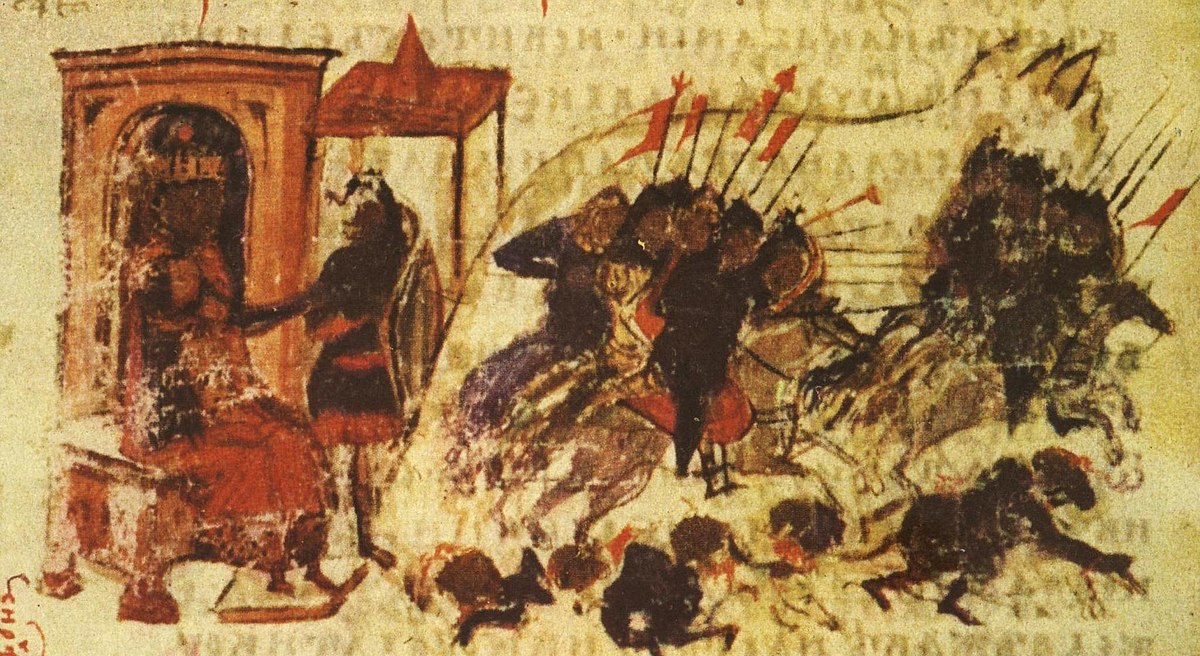In 717-718 Leo III, who had come to the throne as a successful general, defeated the Arabs who were besieging Constantinople. Thereafter the Byzantine struggle against the Muslims gradually became stabilized along a fixed frontier in Asia Minor.
But the Muslim capture of Crete and Sicily in the ninth century opened the way for repeated pirate raids against the shores of Byzantine Greece and southern Italy. In northern Italy the Lombards extinguished the exarchate of Ravenna in 751, and Byzantine rule was interrupted by the alliance between the Franks and the papacy. And in the Balkans the Bulgarian menace reached a new peak of severity.
Under the iconoclastic emperors, iconoclasm took a violent antimonastic aspect, since the monks of Byzantium were the great defenders of the images. During this
phase of the struggle some of the monks challenged the right of emperors to legislate in matters of religion. But the images were twice restored by imperial decree. As a result of the struggle, the Byzantines drew more careful distinctions between superstitious adoration paid to images and proper reverence.
Although the new system of small military holdings and the growth of a free peasantry retarded the development of large estates during the eighth and ninth centuries, landlords were nevertheless again beginning to accumulate properties. One cause may have been the ruin of the small farmers in Anatolia as a result of disorders that accompanied a great rebellion under Thomas the Slay.

